
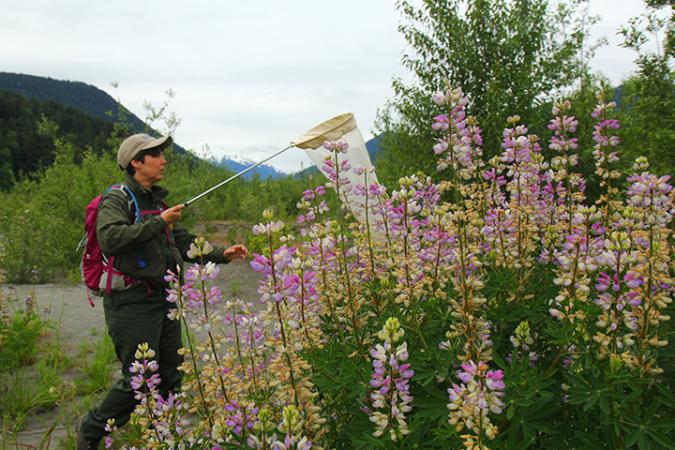
I’m standing in the Hoh rainforest in Olympic National Park, a light drizzle starting to come down on this late day in May. I’m surrounded by people who are absolutely enthralled by the various mosses, lichens and liverworts being shown to us, and I love it.
We’re all here for a BioBlitz — a citizen science experience that seeks to engage community members, scientists and educators for a whirlwind biodiversity inventory. Given the task of cataloging every possible species of interest in just a few short hours, we rise to the occasion quickly and passionately. For many of us, this is our first experience with a BioBlitz, and there are a lot of new and exciting species to learn about.
First held in the mid 1990s, BioBlitzes are a rapid assessment of biodiversity in a given area. Their main goals include:
To catalog all the species (or all the species of a particular interest, e.g. pollinators) in a given area within a short period of time, usually 24 hours;
To increase science literacy and communication;
To engage community members in the principles of scientific research in an exciting, “hands-on” atmosphere;
To encourage people to connect with the outdoor spaces and environments around them; and
To provide participants with tools and skills to continue to be citizen scientists in the other aspects of their lives.
What makes BioBlitzes unique is how they engage people in citizen science. The set date and short timeline help give a sense of occasion and celebration, and an opportunity to engage with the broader community around you. BioBlitzes may be big or small, both in size of the area covered and in the number of people participating. They happen all around the world and encompass all sorts of environments, including urban, rural and protected wilderness.
The National Geographic Society and National Park Service (NPS) have been in partnership specifically to conduct Bioblitzes for over a decade, conducting events across America’s national parks as part of the ten-year lead-up to the 100th anniversary of the NPS in 2016. Regina Rochefort, Director of the Research Learning Center for the North Coast and Cascades Network of the NPS, was one of the main players in bringing BioBlitzes to the parks in her network for the 2016 centennial event. “For our group of parks, we really wanted to try to make ours more of a balance of science, outreach, communication. We thought our goals should be biodiversity and getting ready for climate change, so that’s why we decided to focus on pollinators,” she explains.
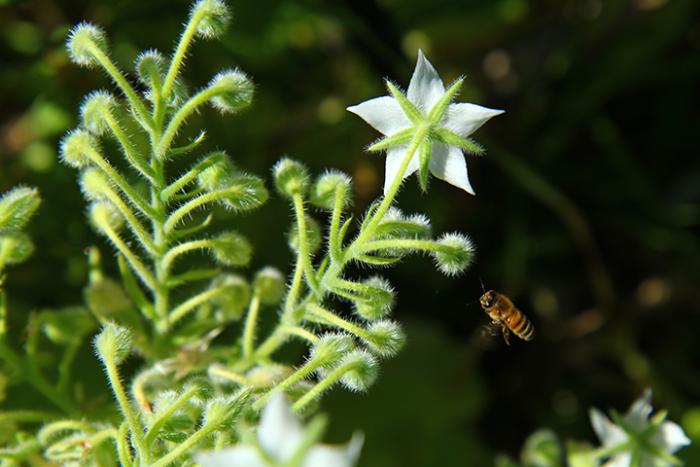
For the centennial event last year, BioBlitzes were held in 126 national parks across the country, including Olympic National Park, where I stood in the rainforest surrounded by other eager scientists, park rangers and community members. When you add in events held by other public lands groups, including the National Forest Service and the Bureau of Land Management, as well as local sanctuaries, a total of 278 BioBlitz events happened across the country. During the nationwide event, almost 6,500 species were cataloged by thousands of participants, and over 50,000 observations were contributed to the iNaturalist platform. Official numbers have yet to be reported, but it’s likely that the tally will be substantially greater. And since new species have been discovered in past BioBlitzes, it’s possible there are more new finds waiting in this data.
BioBlitzes not only help us expand our species inventories, but they can also help us understand how ecosystems recover after destructive events. For example, one of the outings during the 2016 BioBlitz at Olympic National Park included a bee, pollinator and plant inventory at the former Lake Aldwell site. Lake Aldwell was a reservoir created in 1913 through the damming of the Elwha River, which was successfully dismantled by the Elwha Ecosystem Restoration Project in 2012. This marked a significant step toward recovery for this ecosystem and the beginning of the restoration process for over 70 miles of fish habitat, including the Pacific salmon and steelhead populations within the park. Hosting a BioBlitz in a region actively undergoing restoration, such as the Elwha River, can help scientists determine the efficacy of any restoration interventions and track the natural progression of species diversity, abundance and interaction as time passes.
BioBlitzes also provide an opportunity for scientists and community members to work side-by-side on a project, which can help increase science literacy and engage people in the principles of scientific inquiry. “Everybody that came had a good time,” says Rochefort, “because they were all working in small groups and they had direct contact with scientists in the field. It wasn’t coming back and showing things — they were working with them out there.”
Elias Bloom, a graduate student in entomology at Washington State University and organizer of several citizen science initiatives as part of his research, notes how many of his BioBlitz participants ask him questions about things they’ve read on the internet about bees that they want to clarify with an actual scientist. Coming out of one of his bee BioBlitzes, Bloom says, “I hope that when [participants] walk away from this class they have their questions answered about bees and also know that I’m a source of information for them and they can contact me and can reach out to me if they have more questions.” Relationships like this can help bridge the gap between scientists and non-scientists, and are an important part of utilizing citizen science approaches such as BioBlitzes.
Open to groups of all ages, students are often involved in these events. Jared Low, an education and outreach ranger at Olympic National Park, had already been working with the Quileute Tribal School doing after-school STEM education for K-6 grade when word came that a BioBlitz was coming to the region.
“BioBlitz worked out great where we . . . had this park-wide initiative, this park-wide day, that was identified as the National Park Service BioBlitz Day — and so it just worked out well, we already had the core group of youth,” he shares.
Citizen science was already an underlying theme of their afterschool STEM training, and students had discussed BioBlitzes before the opportunity to participate in one came up. Of the actual day, Low says, “I think for the students there was an element of empowerment or ownership in what they were doing. I think they liked the idea of contributing to the science community and so I tried to really kind of build that part up. There was definitely a sense of ownership that they latched onto and appreciated. I think that was sort of the big takeaway, ‘Wow we can contribute to this real-time science.’”
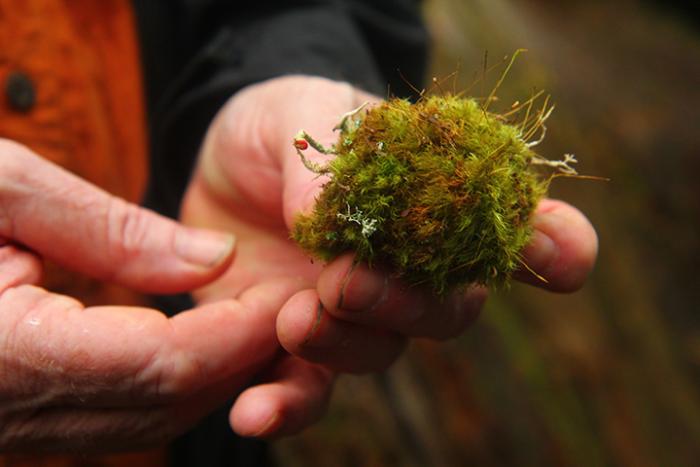
BioBlitzes’ inclusivity for all sorts of people as well as all sorts of ecosystems is part of what makes them special. By focusing on the local environment, people start to understand that biodiversity is important in their own communities and environments, not just somewhere else in the world. One of the common misconceptions about biodiversity is that it’s “out there,” somewhere far away, in a rainforest or a coral reef. While these areas are certainly hotbeds of biodiversity, they’re not the only places that host myriad species in a range of ecosystems and niches. Laurel Chor, a National Geographic Young Explorer who has organized a number of BioBlitzes in her hometown of Hong Kong, explains how effectively these events connect people to their local environment: “It's only when people really get their hands dirty and experience nature for themselves that they'll understand and appreciate their environment. This is especially true in Hong Kong, where there isn't a strong outdoor culture and kids are often taught that nature is ‘dirty.’ Most people in Hong Kong have no idea that the city has such amazing biodiversity, so when they get to see and touch it for themselves, it really opens their eyes and changes how they view the very place they live in.”
A key component of BioBlitzes is engaging people in their local environments — even a city — to show that biodiversity and conservation are not just happening somewhere else in the world, they’re happening right here at home, wherever you are. That’s part of why Bloom’s work on pollinators in Seattle’s urban gardens is a great fit for BioBlitzes — many people don’t realize what is right there under their noses. These kind of events help people see conservation as more relevant to their lives. Bloom’s citizen scientists have already cataloged almost 70 species of bees just within urban gardens. Of the five participants in Bloom’s BioBlitz the day I attend, all of them state that they want to learn more about bees and, specifically, more about what’s going on outside their house. “I just want to understand more about what’s here in my backyard. If they can use it for more general data, then that’s even more important,” says Anita Waghani, an intern with the Seattle Tilth Alliance. Another one of Bloom’s participants, Seattle pseudo-gardener Ignacio Lobos, resonates with the interactive and communal approach of the BioBlitz: “It gets people involved; it’s hands-on. It’s good because you get connected to other people. You’re participating in the scientific process without even realizing it — you get excited about data collection when you see others collecting.”
One of the hopes of many BioBlitz events, which tend to last only a short time, is that participants can discover skills and opportunities to engage with this type of observation in their normal lives. To this end, one of the tools frequently employed in BioBlitzes today is the mobile app iNaturalist. Created by a team of naturalists at the California Academy of the Sciences, the app provides a platform for users to record what they see in nature and connect with other citizen scientists. You can upload a photo of whatever species you’re cataloging, along with the location and any other interesting information from your sighting. You can download guides, join specific BioBlitz projects, and explore other sightings in your area and around the world. For those in areas without internet connection, the app will store your entries for upload when you return to service. Using the same app can also help scientists by aggregating data in a singular platform, which is helpful when the time comes for analysis.
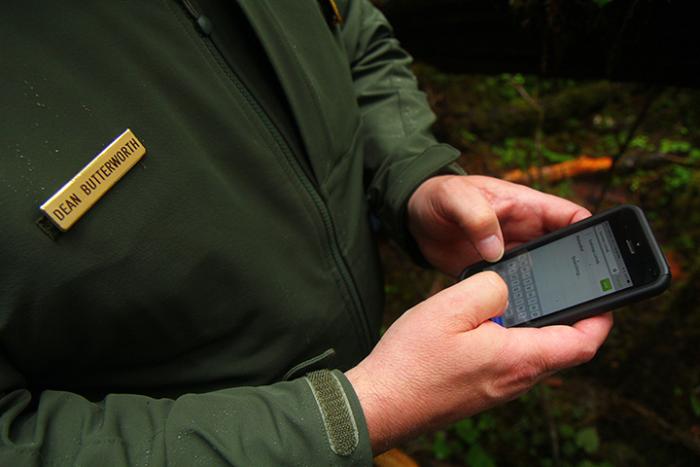
While the iNaturalist platform is hugely helpful during a BioBlitz itself, it also provides people with a way to continue on as citizen scientists even when the event is over. “I think we get valuable data, we get more people interested in using iNaturalist doing observation, so we get an expanded inventory that we didn’t have,” says Rochefort, who is excited to promote the use of iNaturalist to visitors in the NPS North Coast and Cascades Network — “we want people to be using science continually and integrate into each hike they go on and be thinking about it more than one big activity.”
Bloom hopes that people will continue to contribute after his BioBlitz courses, “When people walk away from this class I hope that they have the knowledge that they need to monitor bees and help contribute to the conservation of bee species. Anybody can become a citizen scientist, anybody can contribute observations to this project. And I hope that when people walk away they say, ‘You know, this message is really important and what’s going on is really important — I want to contribute to this monitoring program and I know how to do that.’”
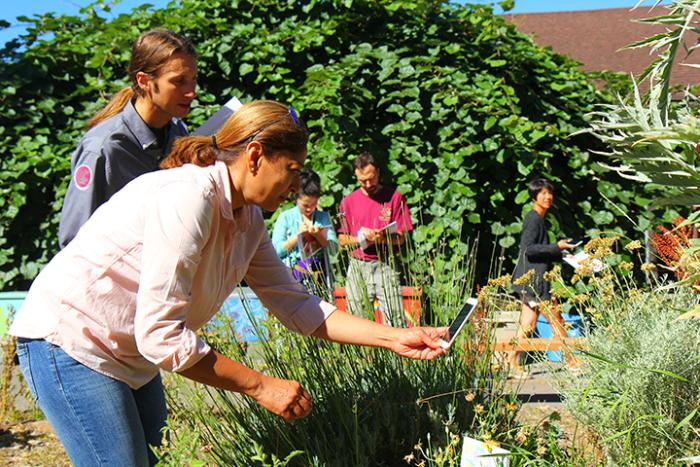
Looking to the future, it’s imperative that we find ways to make science and conservation relatable to people who don’t make their living as scientists. “It’s just been really fun,” says Bloom of his BioBlitzes, “It’s been fun to engage with these people and I think that sharing the BioBlitz experience is almost therapeutic . . . I think there are benefits to just slowing down and observing your environment. So this class has been really good for people and for myself, too, because you get out and spend time in a garden and it’s really peaceful.” Chor’s work in Hong Kong has showed her that “It's not just nature that they see up close — it's the way nature is affected by human impact, too. It makes them think about what kind of immediate impact they have on their local environment — positive or negative — and it also makes people realize that it doesn't take much to contribute to conservation.”
Finding unique and exciting ways to engage people with scientific techniques and teach them about biodiversity in their local area is a great way to support more scientifically literate and environmentally aware communities all around the world, which can’t come soon enough. So get out there and help count!
If you’re interested in conducting a BioBlitz in your area, check out the resources provided by National Geographic here.
Photos owned by Gemina Garland-Lewis, and cannot be used or reproduced without permission.